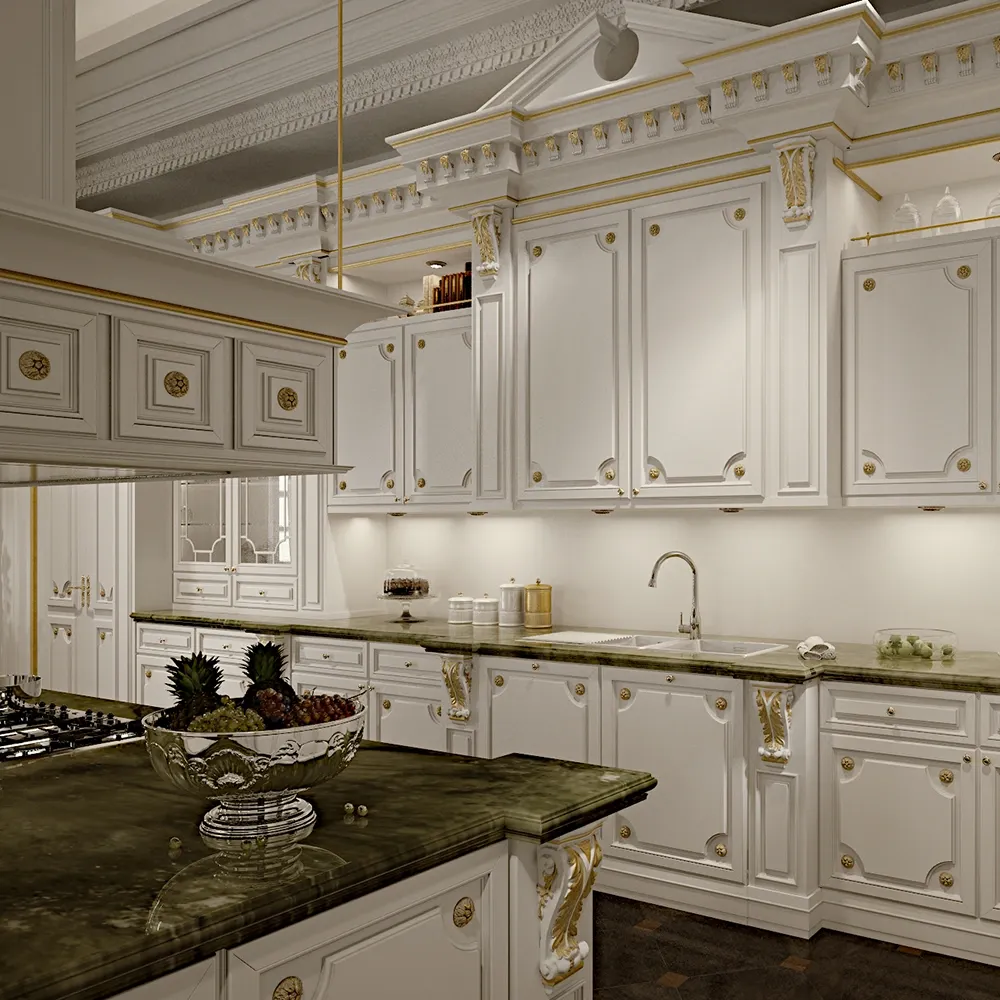In the realm of interior design, luxury transcends mere aesthetics – it embodies a philosophy where every detail serves as a testament to exceptional craftsmanship and refined taste. Today’s most sophisticated homes showcase this dedication to excellence, particularly in spaces like bespoke luxury kitchens, where function harmoniously meets artistic expression through carefully curated materials and masterful design execution.

The Art of Materials Selection
The foundation of luxury interior design lies in the careful selection of extraordinary materials. Italian Calacatta marble, with its distinctive grey veining against pristine white backgrounds, often graces countertops and backsplashes. Exotic woods like Brazilian Rosewood and African Bubinga bring warmth and character to custom cabinetry and architectural details. The interplay of these materials creates a symphony of textures – hand-hammered copper fixtures might complement brushed gold hardware, while hand-blown Murano glass lighting casts ethereal shadows across meticulously crafted surfaces.
Craftsmanship: The Cornerstone of Luxury
True luxury reveals itself in the details that only master craftsmen can achieve. Traditional techniques like French polishing, where shellac is hand-rubbed to create a mirror-like finish on wood, remain highly sought after. Artisans might spend weeks perfecting a single piece of marquetry, creating intricate patterns from dozens of wood varieties. In modern luxury spaces, these time-honored techniques often merge with contemporary innovations – laser-cut metal screens might feature alongside hand-carved wooden panels, creating a dialogue between past and present.
The Influence of Classical Design Principles
The most compelling luxury interiors often draw inspiration from classical design principles while reimagining them for contemporary living. The golden ratio continues to inform spatial planning, while symmetry and proportion create a sense of balance that feels inherently right. Consider the work of legendary designer Alberto Pinto, whose projects seamlessly blend classical European grandeur with modern comfort. His influence continues to inspire designers who understand that true luxury lies not in ostentation, but in the perfect balance of form and function.
Contemporary Interpretations of Luxury
Today’s luxury interiors reflect an evolution in how we define opulence. Sustainable materials now command premium status, with rare reclaimed woods and artisanal materials taking center stage. Smart technology integrates seamlessly into classical designs – hidden screens emerge from period-appropriate panels, while lighting systems mimic natural daylight patterns. Leading designers like Kelly Wearstler have pioneered this new luxury aesthetic, where historical references meet forward-thinking design in unexpected ways.
The Role of Personalization
Perhaps the ultimate luxury in interior design lies in its ability to reflect the individual. Custom furnishings, created specifically for a space and its inhabitants, represent the pinnacle of bespoke design. From hand-painted de Gournay wallpapers depicting personal memories to custom-dyed silks that perfectly match a cherished artwork, these touches transform a beautiful space into something truly extraordinary.
The world of luxury interior design continues to evolve, yet its fundamental principles remain unchanged. Whether expressed through the perfect proportions of a Georgian drawing room or the clean lines of a contemporary space, luxury design creates environments that transcend trends to become timeless expressions of exceptional taste and craftsmanship. In these spaces, every element serves a purpose, every detail tells a story, and every room becomes a sanctuary of sophisticated living.